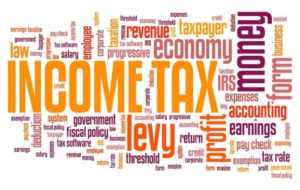
If you are faced with an IRS tax levy, the last thing you should do is ignore it. A levy is a seizure of your property in order to satisfy a tax debt. Unlike a lien, which involves placing a security interest on your property, but which leaves the property itself in your possession, a levy is an actual legal seizure of the property in question. Because of the nature of a levy, it is never the first step the IRS takes to satisfy a debt.
As a general rule, the IRS will only impose a levy if they have assessed the tax and sent you a Notice and Demand for Payment and you have failed to pay the tax due. In this case, the next step is for the IRS to send a Final Notice of Intent to Levy and Notice of Your Right to a Hearing. This levy notice will be sent at least 30 days before the actual levy (an exception may be a levy on a state tax refund).
Although the IRS imposes levies at a point fairly late in the tax collection process, there are things that you can do to have an IRS tax levy released.
What Types of Property Can Be Levied by the IRS?
It might be easier to identify what types of property cannot be levied by the IRS. The IRS can levy real property (real estate) or personal property, and property that is both tangible and intangible. However, the Internal Revenue Code identifies certain categories of property that are exempt from seizure:
- Clothing and school books necessary for the taxpayer or members of his or her family;
- Fuel, provisions, furniture, and personal effects in the taxpayer’s household (up to a specified, inflation-adjusted amount);
- Books and tools of the trade, necessary for the trade, business or profession of the taxpayer (up to a specified, inflation-adjusted amount);
- Unemployment benefits (employment benefits do not encompass retirement and survivors benefits or disability insurance payments under the Social Security Act);
- Undelivered mail;
- Certain limited types of annuity or pension payments.
- Worker’s compensation;
- The amount of salary, wages, or other income necessary to comply with a court order for the taxpayer to pay child support so long as the order was entered prior to the date of the levy;
- Exempt wages, salary or other income as set forth by IRC § 6334(d);
- Certain service-connected disability payments;
- Certain public assistance payments; and
- Any amount payable under the Job Training Partnership Act.
In practice, the types of property most commonly seized by the IRS are a taxpayer’s wages, bank accounts, securities, and accounts receivable. It is usually when a taxpayer lacks sufficient financial assets to satisfy an unpaid tax debt that the IRS will attempt seizure of physical property.
What Can I Do to Stop or Release an IRS Tax Levy?
There are a few ways to stop, at least temporarily, or release an IRS tax levy. If you agree that you owe the taxes claimed, one course of action is to enter into an installment agreement with the IRS. The IRS Fresh Start program has expanded access to streamlined installment agreements. This expansion permits individual taxpayers owing up to $50,000 to make payments through monthly direct debits over as long as six years, usually without providing a financial statement. For tax debts that exceed $50,000, a financial statement is required.
For some taxpayers, an Offer in Compromise (OIC) is another option for resolving a tax debt. An OIC permits taxpayers to settle their debt for something less than the full amount owed. The Fresh Start program has expanded access to the OIC program, as the IRS now has greater flexibility than it previously did in analyzing taxpayers’ ability to pay.
If you agree that you owe taxes but, due to your current financial state, cannot both make tax payments and pay your reasonable living expenses, the IRS may place your account in Currently Not Collectible (CNC), or hardship, status. This does not eliminate your tax debt, but it will stop the IRS collection activity. To be eligible for CNC status, you must file any delinquent tax returns. You will likely have to provide financial information, and may have your income reviewed annually to determine if you are still in CNC status.
Alternately, you may request a Collection Due Process hearing with the Office of Appeals. This hearing must be requested within 30 days of the date on your levy notice. At this hearing, you may present information to support a finding that a levy should not be imposed, including that any tax due was paid, that the time to collect the tax was expired, that the tax was assessed when the taxpayer was in bankruptcy, or other procedural errors.
To learn more about options and procedures for dealing with IRS tax levies, contact the tax controversy attorneys of Ortiz & Gosalia without delay. Our attorneys have post-JD degrees in tax law and offer a range of counsel and representation with regard to U.S. tax law. We can explore your options with you and help you take the necessary action in a timely fashion.
